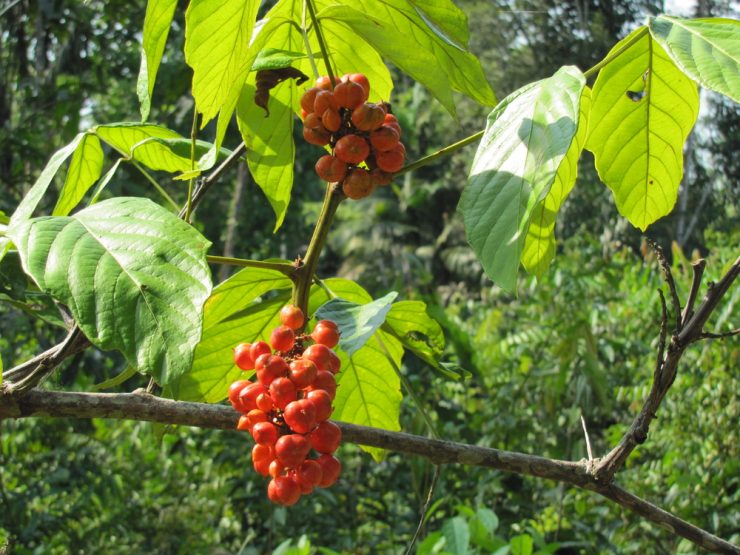Discover the health benefits of this lovely red berry from Brazil.
Native to the Amazon region of South America, guarana (Paullinia cupana) is a climbing woody vine with a fluted stem. It flourishes in hot, humid but shaded environments in temperatures above 180C.
Clusters of yellow flowers are followed by bright red fruits, which split open when ripe to reveal a black seed surrounded by white fleshy skin. From a distance the split fruits look like large open eyes staring down from a leafy canopy. The seeds are collected when ripe then dried and roasted or powdered before being made into capsules.
What is the history of Guarana?
The name comes from the Guarani Indians of northern Brazil who, like other indigenous tribes in the central Amazon River basin, have long used these ruby coloured fruits to make a stimulating drink called guarana.
The traditional method of preparing and using guarana was to harvest and dry the seeds, which were then ground into a powder to which a little water was added to form a paste. The paste was then made into sticks and dried and smoked. An infusion was made by grating part of a guarana stick into hot water, which was drunk like a tea.
Guarana was used mainly as a stimulant and for chronic diarrhoea as well as a pain reliever and blood tonic. It was also taken for hypertension, fever and headaches. Guarana extracts started to be added to carbonated drinks in the early 1900’s and by the 1940’s guarana had become Brazil’s national drink.
What are the health benefits?
These days millions of Brazilians take guarana as a daily tonic to combat fatigue and premature aging and as a blood purifier. It is also used for flatulence, dyspepsia, diarrhoea, fever, headaches and migraine and as an appetite suppressant.
In other parts of the world, including the UK, it is used in the same way as coffee to help ward off fatigue, boost concentration and alertness and to boost energy levels. Guarana extract is especially popular with athletes who sometimes take it to enhance peak performance. It can also be found in some energy drinks.
How does it work?
Guarana seeds contain around seven per cent caffeine as well as tannins and other chemical compounds. Caffeine is known to stimulate the central nervous system as well as increase heart rate and blood glucose levels. It also acts as a diuretic and appetite suppressant. Many of the therapeutic effects ascribed to guarana may therefore be put down to its caffeine content.
How can I use it?
Whether in powder or capsule form or as a drink, guarana should always be taken according to the packet instructions or as advised by a medical herbalist.
Watchpoints:
Guarana should not be taken
- If you are pregnant or breastfeeding.
- If you have heart problems or high blood pressure
























Add comment